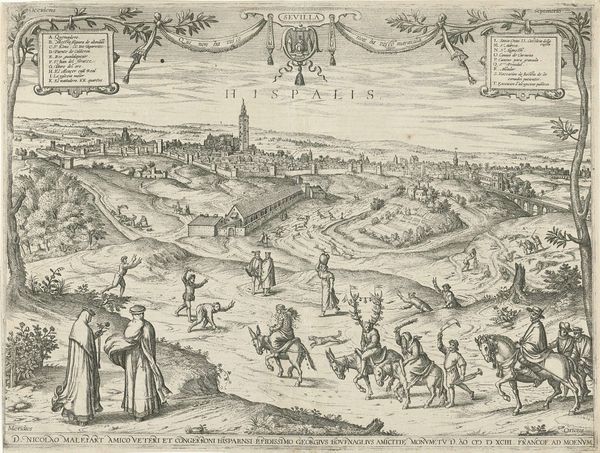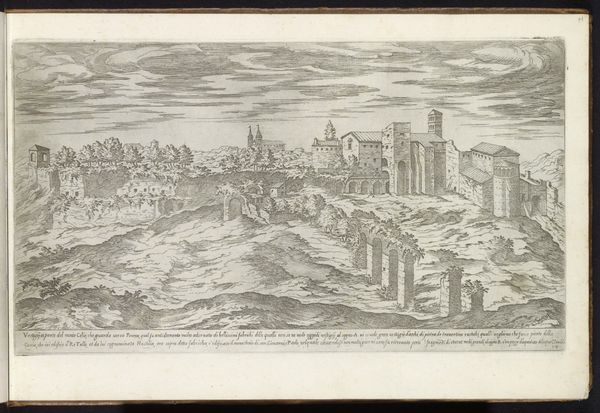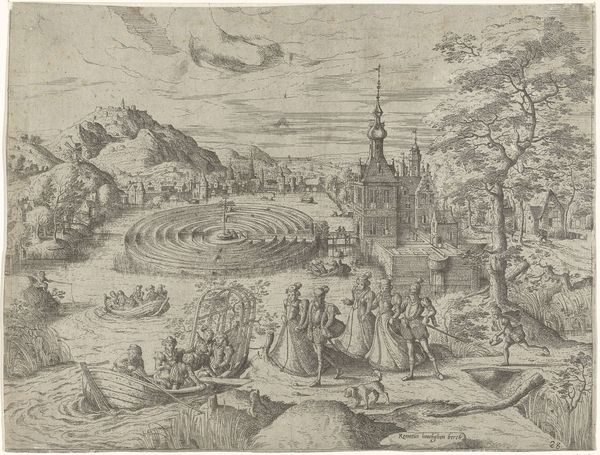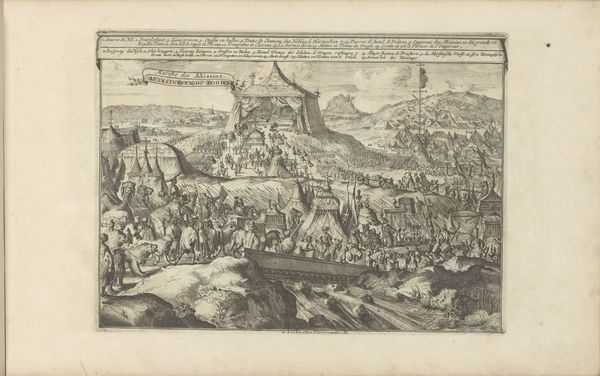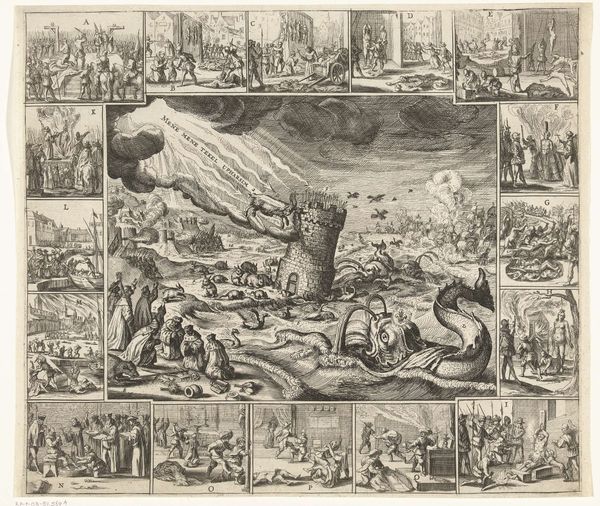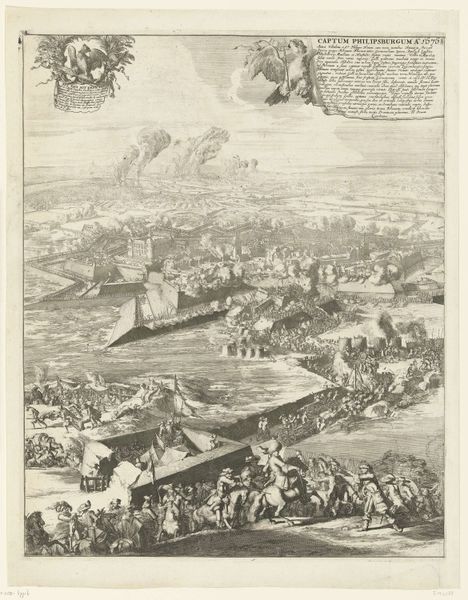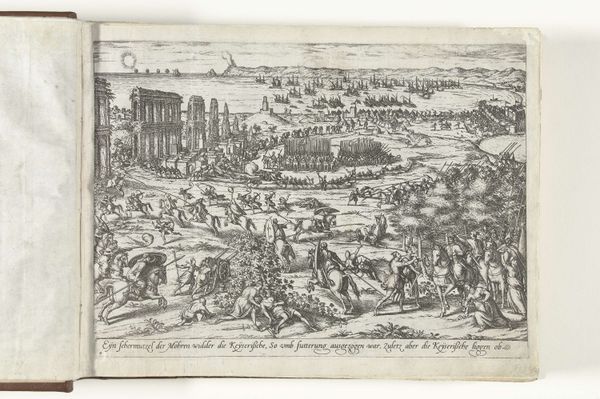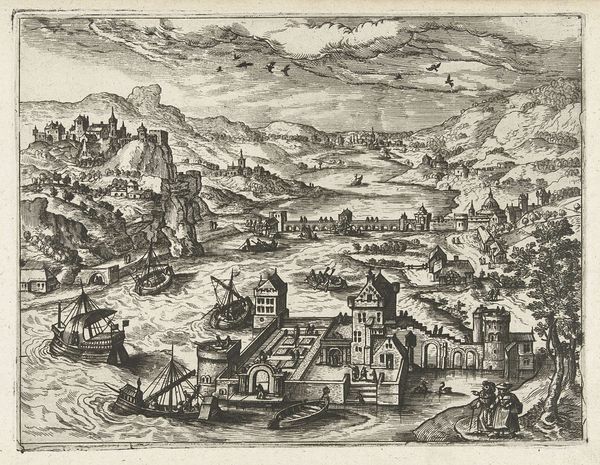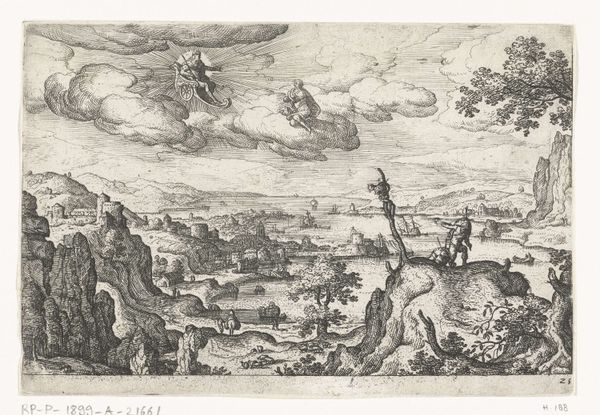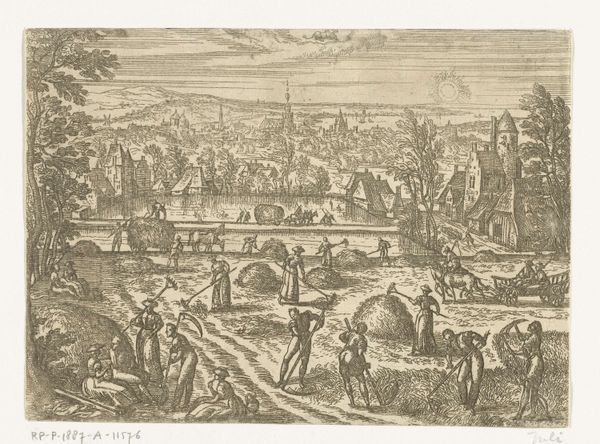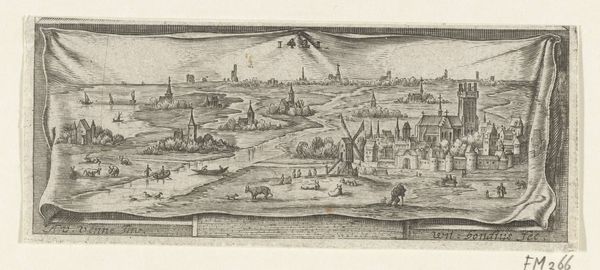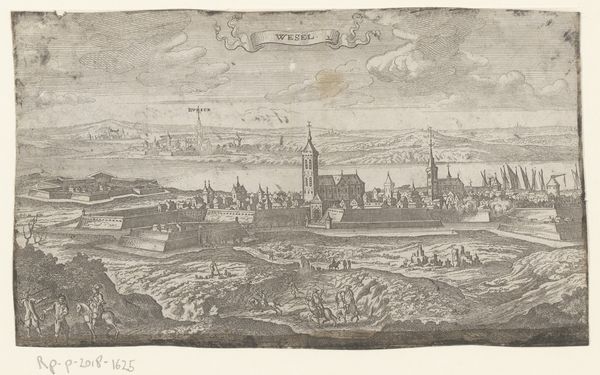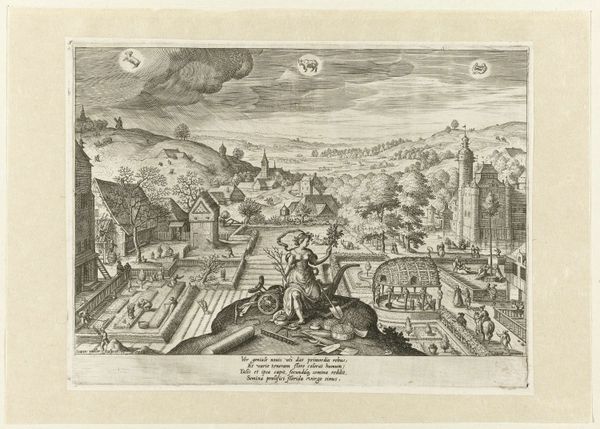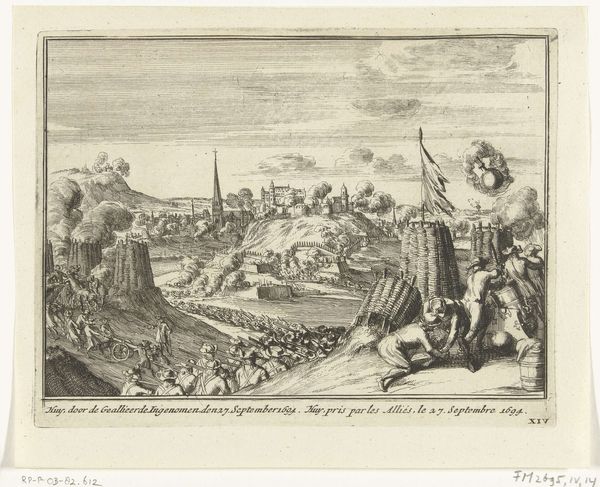
print, engraving
#
baroque
# print
#
landscape
#
line
#
cityscape
#
history-painting
#
engraving
Dimensions: height 209 mm, width 310 mm
Copyright: Rijks Museum: Open Domain
This etching by Romeyn de Hooghe, made in the latter half of the 17th century, depicts the St. Elisabeth flood of 1421. The engraving captures both the devastation and the resilience of the people affected by the event. De Hooghe positions the viewer at the edge of the disaster, looking out over a landscape where nature has violently disrupted human settlement. Bodies are sprawled across the foreground. These are the bodies of the working class, those who lived closest to the water and had the least resources to escape its wrath. In the 17th century, prints like these functioned as both news and moral lessons. The flood becomes a symbol of divine power, one that reflects cultural anxieties about human vulnerability. The emotional resonance of the work lies in its ability to evoke empathy for the lost and displaced, prompting reflection on the precariousness of life and the awesome power of nature. The flood serves as a stark reminder of the human cost of environmental catastrophe.
Comments
No comments
Be the first to comment and join the conversation on the ultimate creative platform.
